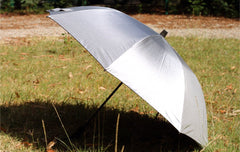
What Clothes to Wear Hiking
Depending on that time of year you hit the trail, clothing can vary a little bit but generally a 3 season layering system will keep you warm and dry in any circumstances.
Layering is very important, peoples first instinct is to grab bulky warm gear but when backpacking it's best to use a layering system. Lighter fabrics that keep you warm which you can layer are going to save weight and room in your backpack. It will also give you more versatility because as you warm up you can take off or put on layers as you need to.

Material
As far as materials go, you definitely want to avoid cotton. Cotton absorbs moisture and is not a very good insulator. It also tends to stay wet longer which puts you at risk of hypothermia.
The materials like polyester and nylon tend to dry quickly and wick moisture away from your skin. One of the draw backs is they do tend to hold onto doors a lot more than wool.
Many backpacks use merino wool which is itch free, it insulates well and dries quickly compared to cotton. It is also really good at eliminating odours.
Underwear
When you head out on trail we advise taking only 2 pairs of underwear, that way you can rotate each day or 2 by rinsing them out with water and hanging them on the outside of you pack to dry. Just make sure you choose something synthetic which is odour resistant, dries well and lightweight. The same goes for bras.
Socks
For socks we recommend 2 pairs for hiking and one pair for sleeping. If you know you have a lot of river crossings or expecting a lot of rain then add in another pair. Using wool socks lessens the odour, helps with blisters and dry quickly.

Base layers
Making sure you take base layers is really important unless you know it's going to be stinking hot while on trail. Having something warm and dry to sleep in at night can make a bad day end well. A synthetic or wool top and bottom are perfect for colder weather hiking but make sure you keep at set reserved only to sleep in.
Tops
Tank tops are more breathable than button up long sleeve shirts but shirts a extremely versatile. They can protect you from the sun, help keep you cool and protect you from bushes and bugs. Some of them offer SPF protection with great ventilation. You can roll up the sleeves when it's hot or button down the shirt to keep you warm.
Pants
A lot of times people out on trail are preferring to hike in shorts. It keeps you cooler and even if the weather is a little colder your legs tend to stay a bit warmer than the top. That being said your legs aren't going to be as protected from getting scratched up from bushes and eaten by bugs.
If you're not sure if shorts are the way to go you can always use convertible hiking pants where the lower half zips off and converts into shorts. As log as you avoid jeans you are probably going to be ok no matter what you choose.
Choosing yoga pants are another great option which can help with chafing but are not as durable as other options. Using tighter pants for hiking can leave you exposed to bugs.
Mid layer
A puffer jacket or a vest are a both great light weight options. Regardless if it's warmer weather or not, making sure you have a mid layer in every condition is a safety precaution.
You have 2 types of puffer jackets, down and synthetic. Down is lighter weight although once it gets wet it's basically useless. You also need a special type of cleaner for down as normal detergent will strip the feathers of their natural oils. A synthetic jacket will be cheaper, be easier to wash but they are heavier.
Some people just decide to bring a fleece pullover instead of a puffer jacket. These are generally heavier but you can use it to sleep in when the weather get cold, is more durable and will still have insulating properties when it gets wet.
Wet Weather
When shopping for a rain jacket and pants some the features to look out for are pit zips. These help control your temperature and ventilate yourself when you get too hot. For rain pants having something with a elastic top so you can pull them over your clothes easily helps. Having zippers around the ankle area enables you to pull them over you hiking shoes without having to take them off.

Another option is a rain kilt because they are easier to put on and are more breathable than pants.

Umbrella
Having an umbrella can stop your rain jacket from getting totally soaked through and help keep you warm.

Gloves
There is nothing more miserable than having freezing hands when you get up in the morning or trying to hike. Having a set of gloves can stop your hands from hurting from the bitter cold. Possum down gloves dry quickly but there are many different types of gloves out there. You may want to consider waterproof gloves if it's going to rain.

It can be easy to overpack so if you just take a base layer, regular layer, one mid layer and rain gear you should be all good.
YOU MAY ALSO LIKE



Leave a comment